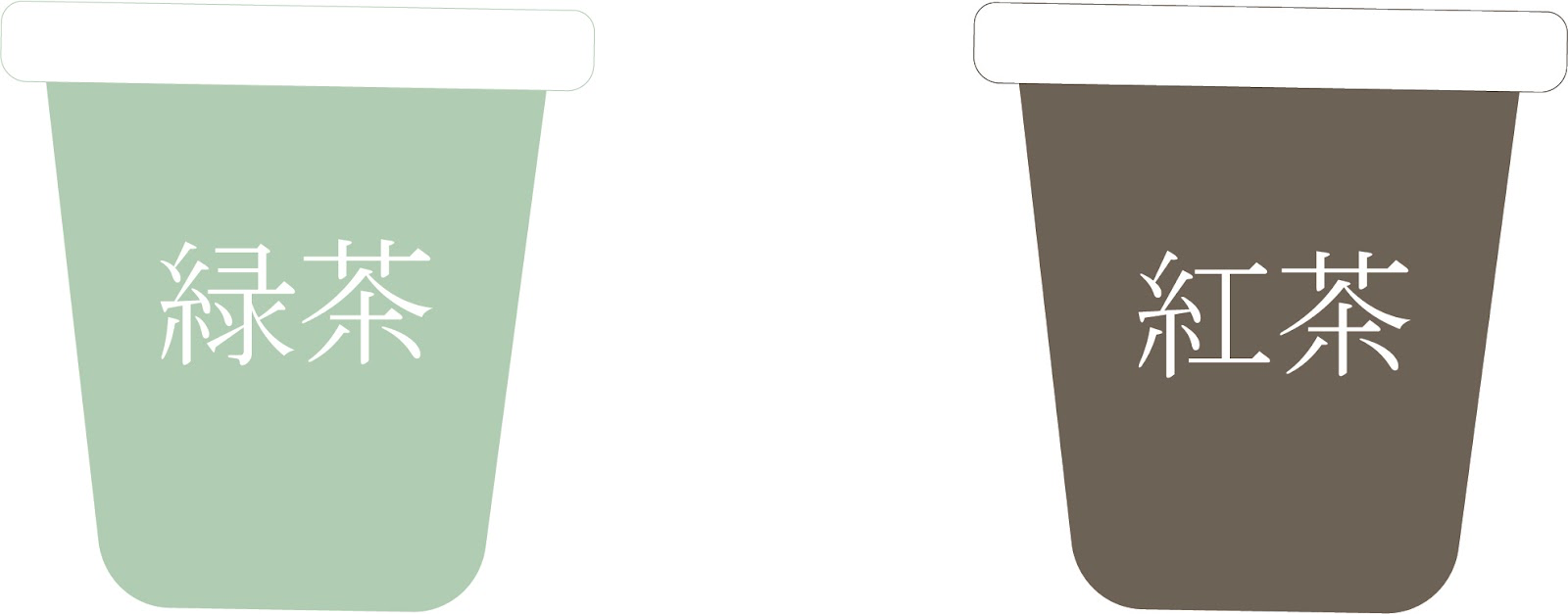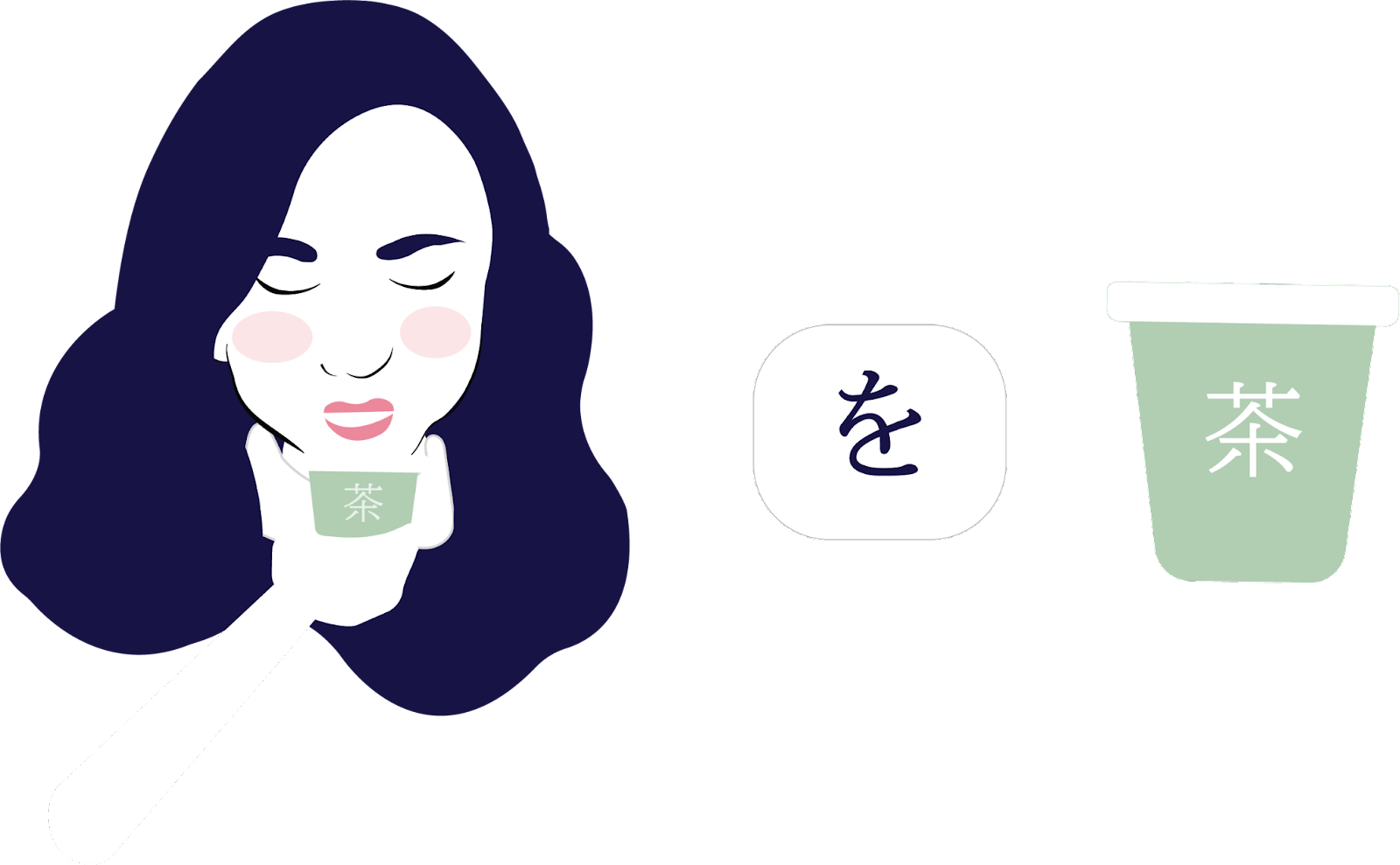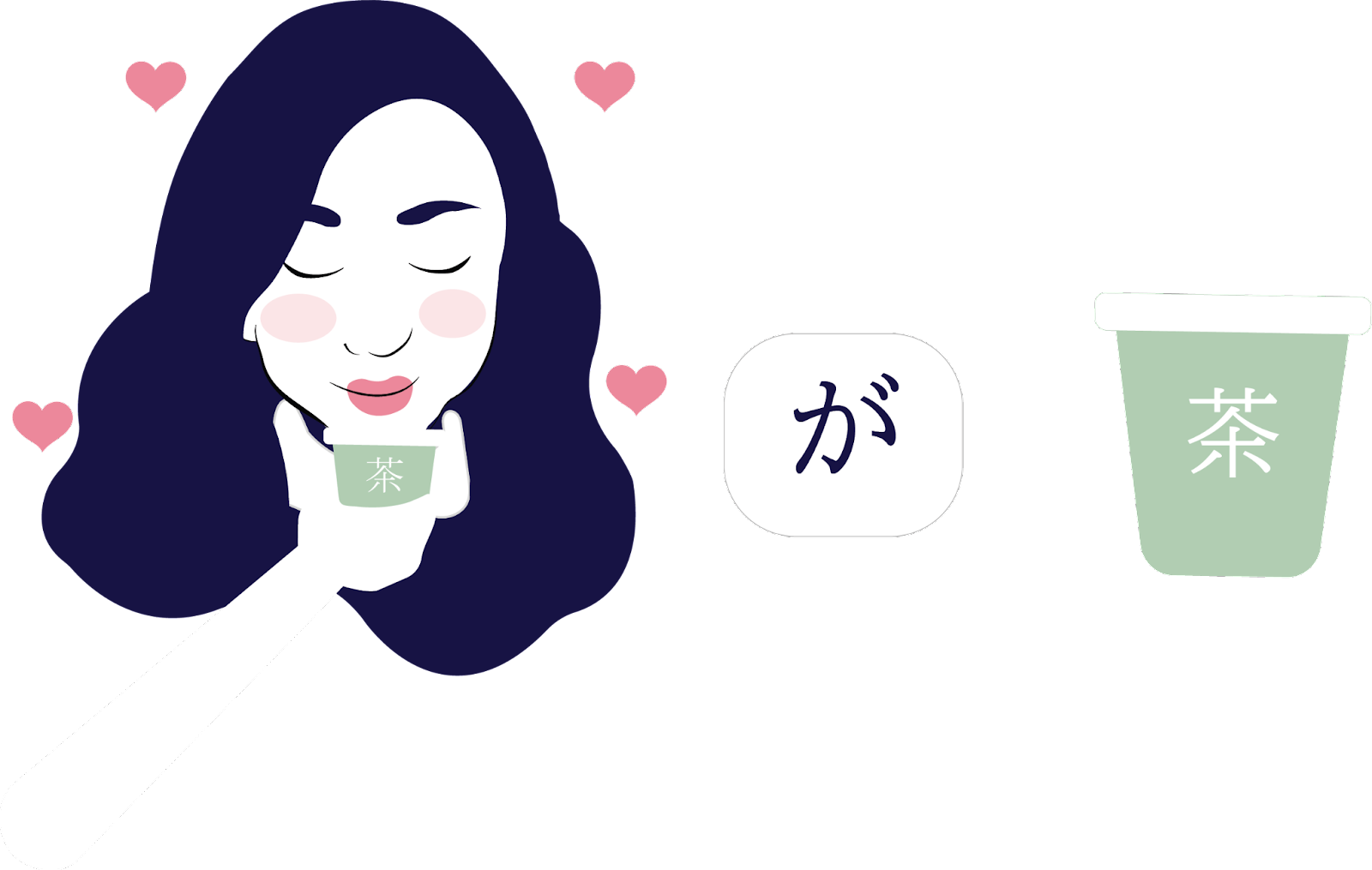Have you ever thought about a screw? Probably not. It's just a piece of metal that, by itself, doesn't seem to have a significant purpose. Right?
Now imagine if you were to remove all the screws from a shelf — what would happen? It might stand still (until you touch it), or it could fall apart completely. While tiny, those pieces of metal are almost essential to the integrity of the structure of our shelf as a whole. Screws connect things so that they can work together. The shape of a particular screw might even tell you where it belongs (or doesn’t belong) in the thing you’re building. Without them, you may still be able to build something, but it runs the risk of collapsing at any time.
That little screw doesn't seem so insignificant anymore, でしょ?
Alright, enough about screws. Let's talk about Japanese particles!
What is a particle?
A particle is a term that doesn't really have a fixed definition: they are function words that can’t stand by themselves and/or can’t be classified as a traditional part of speech. As such, you might say that they are defined by what they aren't, rather than what they are. In more practictical terms, they serve to establish the relationship between words in a sentence and/or clarify the particular role that a given word is playing within a sentence.
Some authors classify particles as being a type of preposition (on, in, nearby, etc). Others say that particles and prepositions have completely different functions. The reality is that there is a fine line between both concepts — and for a lot of us, this can be very confusing.
To better understand the differences between prepositions and particles, watch this video.
Are Japanese particles really just prepositions?
In Japanese, particles do perform a similar function to that of some English prepositions. However, from the get-go, we can see a difference: their placement within a sentence is not the same. Prepositions go before the word they modify, but particles go after them. So are they really like "prepositions"?
At the end of the day, however, these technical debates about terminology probably aren't very relevant to your needs. If it makes things easier for you, you might think of Japanese particles as being like postpositions — prepositions that come after the word(s) they modify.

Introduction to Japanese Particles
In Japanese grammar, particles are kind of like screws. They are not only responsible for defining the relationship between one word and another but also serve to generally support the language’s structure. It's important to note that changing a particle (or using the wrong one) can change the entire meaning of a sentence. Knowing which particle to use and when to use it allows us to communicate clearly and fluently.
As we mentioned, In Japanese particles fulfill several functions. They:
- Define topics
- Mark subjects
- Identify objects
- Indicate direction, location, time, and possession
- Mark questions
- Connect elements
- And much more...
Without further ado, let's get to know them!
Topic particle は
The particle は (pronounced wa) is known as the topic marker. As its name suggests, it defines or marks the topic of the conversation. It allows us to know “what” or “who” we are talking about. If we translate it literally, the closest English equivalent would be “as for” or “speaking of” — it’s sort of a verbal way to direct attention towards something.
Imagine that your friend offers to make you a cup of coffee. After being served, they hold the cup up and say what do you think? While they haven’t actually said about the coffee, the gesture of holding the cup up in the air nevertheless serves to indicate that they’re talking about the coffee. The partitcle は does something sort of similar.
To use this particle, we need to attach it to the end of a noun — the one that’s serving as the topic of a particular sentence or conversation.
彼女は由佳です。
かのじょはゆかです。
Kanojo wa Yuka desu.
She is Yuka.

As we can see here, we are talking about Yuka. She is the topic of the conversation — or, at least, this particular sentence. We've reflected this in the accompanying image: the arrow is pointing at Yuka, almost as if we had gestured to this woman standing next to us and said Yuka.
は As a contrast marker
The は particle can also be used to contrast two different elements in a sentence.
店員さん: 由佳さん、紅茶は美味しいですね。
てんいん: ゆかさん、こうちゃはおいしいですね。
Ten In-san: Yuka-san, kōcha wa oishī desu ne.
Clerk: Mrs. Yuka, black tea is delicious, isn’t it?
由佳: 緑茶は美味しいです。
りょくちゃははおいしいです。
Ryokucha wa oishī desu.
Green tea is delicious.
Here, the particle は denotes that Yuka thinks that green tea is more delicious than black tea. Without making an explicit objection, she’s implying that she prefers one tea over the other.

Note that we also do this sort of thing in English. Imagine that your friend gave you a breakfast plate that included an omelet, some hash browns, and a muffin. After you’ve eaten a bit, they ask how it is. If you just say well, the omelet is nice! It implicitly sounds like you’re saying the hash browns and the muffin aren’t so nice.
Object particle を
Pronounced wo, the particle を works as an object marker — it defines the direct object of a sentence. In other words, を will let you know who or what is being affected by the verb. If the verb of a sentence is to drink, then を will be attached to whatever it is you're drinking.
由佳はお茶を飲んでいます。
ゆかはおちゃをのんでいます。
Yuka wa ocha wo nonde imasu.
Yuka is drinking tea.
Let's break down that sentence and examine both of its particles.
- We talked about は in the previous section, so you should now be able to see that Yuka is the current topic of conversation. We're talking about Yuka, and she's drinking tea.
- The を clearly identifies tea as the grammatical object of this sentence — the thing that is being affected by her action. What action? Drinking. So, what is she drinking? Tea.

Tea is the direct object, and the particle を marks tea as being the direct object.
(More details about the use of the particle を are covered in this article.)
Subject particle が
The particle が (pronounced ga) marks the subject of a sentence. That might sound straightforward enough, but when you take into consideration that there’s also は for marking “topics”, things get a little more complicated. We don’t really grammatically distinguish between the "topic" and "subject" of a sentence like Japanese does. While this may seem like a beginner's issue, entire books have been written trying to tease out the distinction between how subjects and topics work in Japanese (here’s one small taste, and another).
That in mind, just know that it’s going to take you a while before you’ll be able to feel the difference between は and が. That’s OK. The first time I saw all the different ways this particle is used, I literally cried. Try not to stress too much about it. As you see/hear these two particles used more, you’ll develop an intuitive sense for when to use which.
For the sake of introducing the particle to you, here’s a few common structures in which you will virtually always use が. (You may sometimes replace が with the contrastive は we mentioned above.)
You can use が to express likes and also dislikes.
由佳はお茶が好きです。
ゆかはおちゃがすきです。
Yuka wa ocha ga suki desu.
Yuka likes tea.

In this example, 由佳 is the topic and tea is the subject. The English translation makes it look like the subject of the sentence is Yuka, but that's an issue of localization. In Japanese, this sentence feels more like you're gesturing to Yuka and saying oolong tea is disliked.
由佳は烏龍茶が嫌いです。
ゆかはううろんちゃがきらいです。
Yuka wa ūroncha ga kirai desu.
Yuka dislikes oolong tea.
が As an existence marker
が can also be used to mark the presence/existence of things. Inanimate objects (like houses) take the verb ある, while animate ones (like people) take the verb いる

次の角にお茶屋があります
つぎのかどにおちゃやがあります。
Tsugi no kado ni ochaya ga arimasu.
There is a tea house on the next corner.

茶会の主催者がいます
ちゃかいのしゅさいしゃがいます
Chakai no shusai-sha ga imasu。
There is a tea ceremony host.
Using が to mark an object of desire
To express desire, you use the following pattern:
Topic / Subjectは + Object of desireが + 欲しいです
由佳はお茶が欲しいです。
ゆかはおちゃがほしいです。
Yuka wa ocha ga hoshīdesu.
Yuka wants tea.
Note: 欲しい is only used for cases in which you desire some thing. If you want to do something — like drink tea — you’d have to use を + the ~たい verb form.
も Addition | Inclusion particle
After dealing with the nerve-wracking が, も is a particle that you will really appreciate. If we translate it into English, its equivalent would be “too” or “also.” も is pretty versatile — it can replace the particles が, を, and even the obnoxious は. You may also see it attached to certain other particles: に+も=にも.
Here’s the same sentence structure that we just learned for talking about likes. Notice how the が has been replaced by も.
由佳はコーヒーも好きです。
ゆかはこーひーもすきです。
Yuka wa kōhī mo suki desu.
Yuka likes coffee, too.
由佳はケーキ も欲しいです。
ゆかはけーきもほしいです。
Yuka wa kēki mo hoshī desu.
Yuka wants cake, too.
(Note: English’s “also” is a bit ambiguous. When we say Yuka also likes coffee, it might mean one of two things: [a] Yuka (and another person) likes coffee, or [b] Yuka likes coffee (and something else). This ambiguity does not exist in Japanese. As も is connected to coffee/cake in the sentences above, we know we’re dealing with situation [b]. If you wanted to communicate [a], then you simply have to attach も to Yuka instead of the coffee: 由佳もコーヒーが好きです.
Question particle か
Making a basic question in Japanese is very simple. You just take any normal sentence and then attach the particle か to the end of it, and that's it.
由佳はお茶が好きですか。
ゆかはおちゃがすきですか。
Yuka wa ocha ga suki desu ka.
Does Yuka like tea?
由佳はお茶を飲んでいますか。
ゆかはおちゃをのんでいますか。
Yuka wa ocha wo nonde imasu ka.
Is Yuka drinking tea?
(Note: A few sections above, we introduced the sentence 由佳はお茶が好きです and said that it means Yuka likes tea. To turn that sentence into a question, the only change we made was to add か to the end of it. Making questions in English requires you to adjust the order of words in a sentence, but that’s not necessary in Japanese.)
Destination | Time particle に
This particle is used with verbs of motion to show where something is moving towards — in other words, it marks destinations. It also indicates the time or time duration of an event, and you'll most commonly see it translated as to or at.

由佳はカフェに行っています。
ゆかはかふぇにいっています。
Yuka wa kafe ni ittemasu.
Yuka is going to a cafe.
由佳は8時に着きます。
ゆかははちじにつきます。
Yuka wa hachi-ji ni tsukimasu.
Yuka will arrive at eight o'clock.
Conjunctive particle と
This particle is used to connect/link things or individuals. It can be translated into a variety of things, depending on the situation, but it generally means something like "and" or "with/together."
由佳は友達とカフェに行きます。
ゆかはともだちとかふぇにいきます。
Yuka wa tomodachi to kafe ni ikimasu.
Yuka goes to a cafe with her friend.
と As a listing particle
お茶とコーヒーとケーキと水。
おちゃとこーひーとけーきとみず。
Ocha to kōhī to kēki to mizu.
Tea, coffee, cake, and water.
This example reveals a difference in how things are listed in English and Japanese.
In English, the objects/people in a list are separated by commas, and before the last word of the list, you place the conjunction “and.” In Japanese, you just put the particle と after each element until you reach the last one.
と for quotations
As a quick bonus, you'll also see と used alongside words like 思う (おもう/omou, to think) and 言う(いう/iu, to say). In these situations, とserves to introduce quotations. In other words, it shows what people are saying or thinking.
これはウーロン茶だと思います。
これはううろんちゃだとおもいます。
Kore ha ūroncha da to omoimasu
(I) think that this is oolong tea.
由香さんは、麦茶が好きだと言いました。
ゆかさんは、むぎちゃがすきだといいました。
Yuka san ha, mugicha ga suki da to iimashita.
Yuka said that she likes barley tea.
Location particle で
This particle indicates the location where an action takes place. It can be difficult to distinguish に and で at first, but in a nutshell, に tells us where we are going and で tells us what we are doing there. It'll likely be translated as at, in, or on.

由佳はカフェでコーヒーを飲みます。
ゆかはかふぇでこーひーをのみます。
Yuka wa kafe de kōhī wo nomimasu.
Yuka drinks coffee at a cafe.
で is also used to indicate a means of transportation.
由佳は電車で家に帰ります。
ゆかはでんしゃでいえにかえります。
Yuka wa densha de ie ni kaerimasu.
Yuka goes home by train.
While these are its main jobs, the particle で is actually quite versatile. To learn about a few of its other functions, take a look at this post.
Possession particle の
You might have seen this one attached to a noun or even an entire sentence. The particle の serves to express possession or ownership. When you want to say that something belongs to someone, or that there is some kind of connection between two or more people, you attach the particle の to it. It'll often be translated as ‘s (apostrophe S) or “of.”
Examples:
由佳のコーヒーは冷たいです。
ゆかのこーひーはつめたいです。
Yuka no kōhī wa tsumetai desu.
Yuka's coffee is cold.
由佳の友達もカフェに行ってます。
ゆかのともだちもかふぇにいってます。
Yuka no tomodachi mo kafe ni ittemasu.
Yuka’s friend is going to the cafe, too.
(More advanced uses of this particle are explained in detail in this blog post.)
Direction particle へ
This particle is similar to に, in the sense that both can be used to mark a destination. The difference is that へ emphasizes a direction, whereas に emphasizes a destination. If you wanted to be really specific, you could translate へ as “towards” and に as “to.” Furthermore, while に deals only with physical destinations, へ can also describe metaphorical directions, like progress towards a goal or the future.
In practice, both are basically used interchangeably. This is because if you constantly move towards a certain place, you will eventually arrive there.
由佳は未来へ向かって歩んでます。
ゆかはみらいへむかって あゆんでます。
Yuka wa mirai he mukatte ayundemasu。
Yuka walks towards the future.

Particle Practice
Now that we have seen some theory, let's move on to practice.
This is a reading exercise from a JLPT N5 test. It's OK if you don't understand the entire thing. Right now, I just want you to try to spot the particles that we've talked about above. After you find one, look at the English translation. Can you make sense of each particle's function?
王さんの日記
昨日なおこさんと銀座のデパートに行った。なおこさんと10時に駅の西口で会う約束をしていたが、10時半になっても、なおこさんは来なかった。東口とまちがえたかもしれないと思って、東口のほうへ行ってみたが、やはりなおこさんはいなかった。おかしいと思ってなおこさんの家に電話をしたら、なおこさんはまだ家にいて、12時の約束だと思っていたと言った。なおこさんがすぐ出てきてくれたので、11時には会うことができた。
Mr.Wang's diary
Yesterday, I went to a department store in Ginza with Naoko. I had promised to meet Naoko at the west exit of the station at 10:00, but she still hadn't come by 10:30. Thinking that I might have mistaken it for the east exit, I went to the east exit, but Naoko wasn't there. I thought it was strange and called Naoko's house, but she said she was still at home and thought the appointment was at 12:00. Naoko came out right away, so we were able to meet at eleven o'clock.
How was it? Which particles did you spot?
If you’d like to practice some more, here are a few exercises you can try:
- These exercises contain an answer key, so you can try them by yourself
- These exercises are much more numerous but don’t have an answer key, so you’ll need to check them with a Japanese teacher or friend
Final thoughts
Some aspects of Japanese grammar can be pretty challenging, especially those that differ from our native language. My suggestion is that you approach particles without stressing too much. You don’t have to understand all these concepts right now. Take the time necessary to absorb this new knowledge at your own pace.
The best way to master Japanese particles is by regularly exposing yourself to the language. Fortunately/unfortunately, these particles are everywhere. It used to be difficult to get that exposure, but today we can access Japanese content without much effort, thanks to the internet. As such, your learning doesn’t all have to be study! Enjoy yourself in Japanese, and over time, the particles will fall into place on their own.
(And if you want to be a little amazed/intimidated, check out this Wikipedia article to see an overview of everything Japanese’s particles can do.)
読んでくれてありがとうございます!
Thanks for reading!




